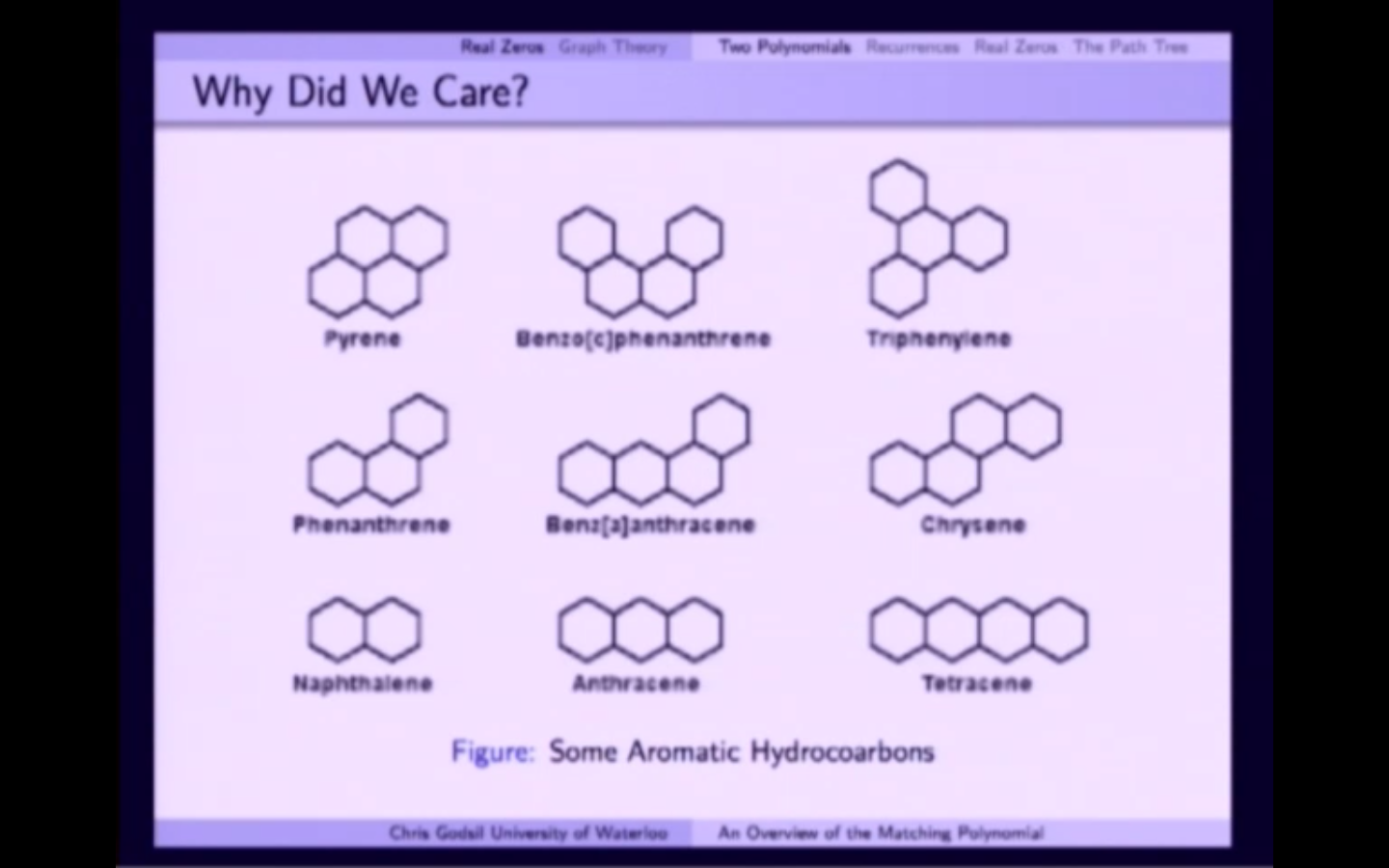An overview of the Matching Polynomial
Presenter
March 9, 2015
Keywords:
- Marcus-Spielman-Srivastava theorem
- generalizations of MSS
- geometric algebra
- Kadison-Singer theorem
- algebraic combinatorics
MSC:
- 68-xx
- 68W25
- 68Rxx
- 11Cxx
- 11C08
- 46N10
- 52Cxx
Abstract
A k-matching in a graph X is a set of k vertex-disjoint edges. If we denote the number of k-matchings in a graph G by p(G,k) and |V(G)|=n, then its matching polynomial is
\[
\mu(G,t) = \sum_k (-1)^k p(G,k) t^{n-2k}.
\]
It is thus a form of generating function, with fudge factors inserted to make our work easier.
Matchings are a central topic in graph theory, but nonetheless this polynomial appeared in Physics and in Chemistry, before becoming an object of interest to graph theorists. If the graph G is a forest, its matching polynomial coincides with the characteristic polynomial of the adjacency matrix of G, and considering the analogies between these two polynomials has proved very fruitful. In my talk I will present some of the history of the matching polynomial, along with interesting parts of its theory.
